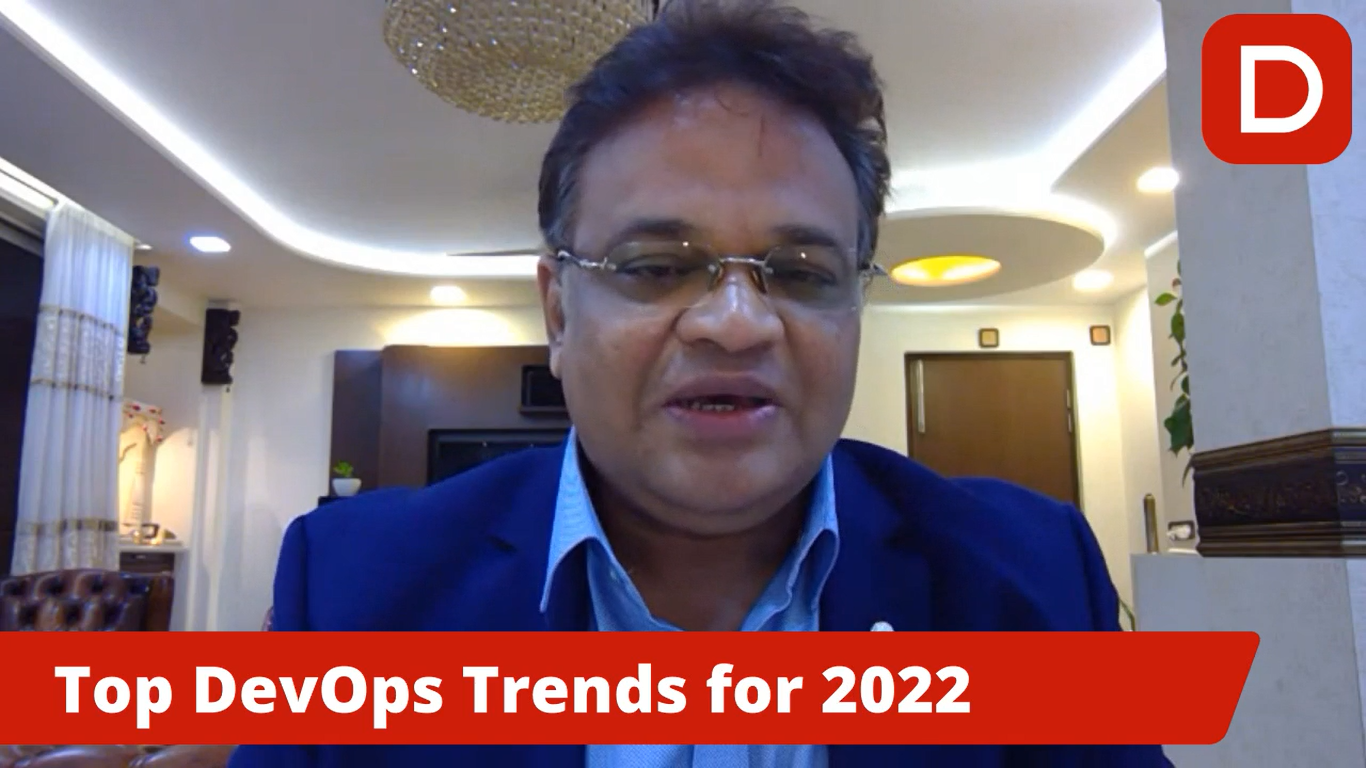DevOps and Agile: The mainstay in the Cloud Native evolution in 2022 and beyond
by Sachin Rane, on Feb 23, 2022 12:18:11 AM
Estimated reading time: 3 mins
Today enterprises are using the DevOps paradigm irrespective of their organizational structure. Essentially, a mode for a collaborative approach towards development and operations, it combines a multitude of practices for faster and better delivery directed at continuous product evolution. It is a methodology that actively solicits customer feedback for product improvement in the Cloud Native environment and supports a faster go-to-market for gaining a significant market share.

Why is DevOps essential?
Traditionally, development and operations as well as all the intermittent teams have followed a siloed approach through their application SDLC. It hampers productivity and efficiency in a hyper-challenged world that is at the cusp of myriad socioeconomic changes, curbs, and restricted movement. With Agile being the norm for sustenance and evolution, DevOps has assumed a new meaning through 2022 and beyond.
As Development and Operations move towards an Agile frontier, the engineers work together across the SDLC which leads to not only business fulfillment at an accelerated pace but also self-fulfillment in terms of evolving skillsets. Quality Assurance and Security has also become an integral part of systemic development, it gives rise to new models, such as BizDevOps and DevSecOps, AIOps, and GitOps, towards making NoOps (No Operations or no in-house application software support teams) a reality.
DevOps is essential and the Cloud Native environment is the vehicle to achieve the faster and better go-to-market in a highly agile environment. It is the only environment that allows fulfillment of the DevOps and Agile methodologies that allows continuous development and continuous integration over microservices architecture-based minimum viable products in consultation with their marquee customers throughout the application SDLC.
Trends in DevOps – 2022 and beyond
As DevOps makes headways in Cloud Native driven environments, it is shaping up significant trends that are inherently driving value in the market. Some of these trends are –
- BizDevOps: It brings business teams in the purview along with development and operations teams for agile CD/CI. It is a popular trend across all low code - no code automation platforms.
- Infra Automation: It is also termed Infrastructure as a Code (IAC). It allows providing additional infrastructure or servers through the use of code instead of manual processing during application development and management in the Cloud Native environment.
- Microservices Architecture: It leverages an application in the form of loosely coupled services over the Cloud Native environment. It allows to steadily build and deliver new features in the application without affecting the performance of the application as a whole.
- DevSecOps: It brings infrastructure security as a mindset during application development and improvement. It is an agile approach to in-built Security instead of building Security nets once the application is deployed and rolled out.
- GitOps: It implies that GitHub-based software development is an integral part of the DevOps paradigm as the software is built, tested, and operated. As GitHub becomes a popular choice, GitOps is assumed to gain importance during CD/CI, collaboration, and version control.
- Chaos Engineering: It is a mode of injecting faults in the application to test the application's resilience to the limit. It allows ascertaining how the application will behave when tested to the limit. It is a form of resilience testing or performance testing in a Cloud Native environment.
- AIOps: It allows to build pattern analysis as an inherent component of the Cloud Native application as it processes as well as creates Big Data. It allows making predictive and prescriptive analysis an integral part of application maintenance.
- Engineers and decision making: It implies that data, AI/ML, and analytics will predispose engineers to be better, data-driven decision-makers across the RACI matrix of product ownership without relying on hierarchy towards driving systemic agility and resilience.
- NoOps: It is the basis of Hyperautomation paradigm. NoOps or No Operations implies that an independent and dedicated team is not required for in-house software maintenance and management.
Watch the Top DevOps Trends for 2022. Click now >>
How is DevOps improving the Cloud Native adoption and journey?
DevOps is driving the Cloud Native application development and Cloud Migration. The trend is cutting through multiple sectors, such as banking and financial services, communication and entertainment, manufacturing and logistics, etc.
DevOps brings to the table key elements, such as accelerated pace of development, rapid delivery, the scale of implementation, improved collaboration, and inherent security –
- Accelerated pace of development: Allows to innovate faster, adapt quickly to evolving market conditions, and efficiently drive business results.
- Rapid delivery: Supports continuous delivery and continuous integration that allows faster go-to-market, improves the pace of feature incorporation, and builds a competitive advantage.
- Reliability: Improves the quality of development and upgrades to offer a predictable and reliable outcome through the development, testing, and rollout.
- Scale of implementation: Allows to develop, implement, and roll out at scale without one upgrade affecting the other.
- Improved collaboration: Supports close collaboration between different teams even in remote environments, allows to share responsibilities and improves efficiencies.
- Inherent security: Supports compliance by imbibing security principles and controls right through development and upgrade.
In short
DevOps and Agile are the methodologies that support the continuous development and continuous integration across the Cloud Native environment. It improves the productivity and efficiency of applications and products in consultation with their marquee customers in good as well as not-so-good times. The methodologies drive the Cloud Native application development and feature upgrades at a hyper pace in a safe and secure environment.


















